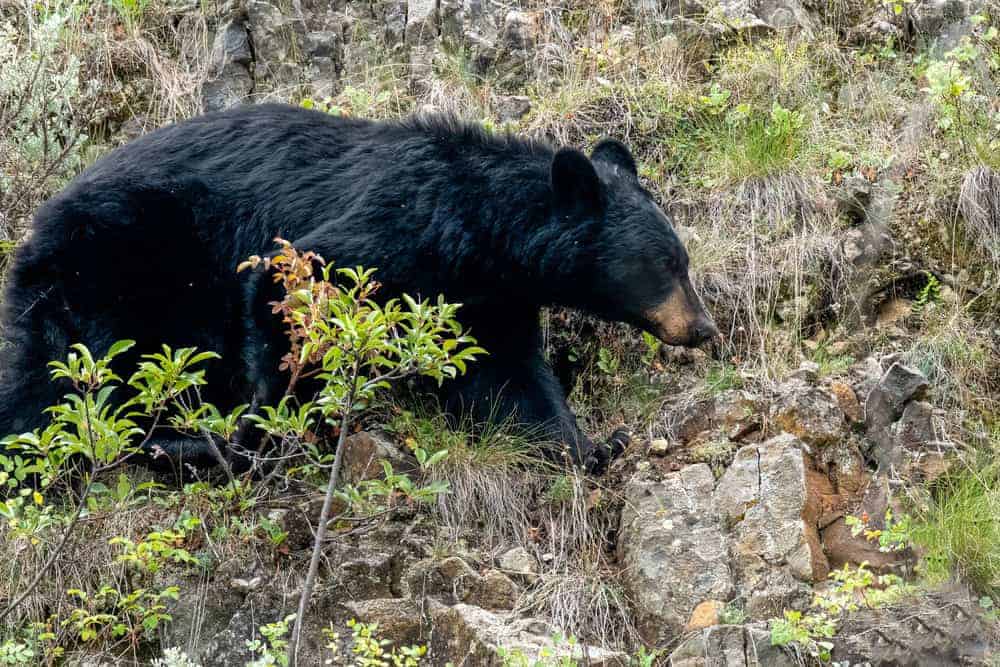In the heart of America lies a town where human encounters with bears are so frequent that they’ve become a notable part of daily life. With a rich history and stunning natural environment, this town stands as a fascinating case study for both wildlife enthusiasts and anyone interested in the subtle dance between humans and nature. Whether you’re a resident or just passing through, understanding why this town experiences the most bear sightings in the U.S. can be both enlightening and essential for safety.
The Town with an Uplifting Reputation

Nestled in the picturesque state of North Carolina, Asheville is celebrated not just for its vibrant arts scene and historic architecture but also for its frequent bear sightings. This small town is the arena for an ongoing blend of wilderness and civilization.
Why Asheville Tops the List

Several factors contribute to Asheville’s dense bear population. Chief among these is its proximity to the expansive Pisgah National Forest, a lush haven for bears due to its ample food supply and undisturbed habitat.
The Black Bear: Asheville’s Most Common Visitor

The black bear is the most common species sighted here. This adaptability gives them an edge in environments that blend urban and natural settings, making Asheville an ideal bear-friendly hub.
The Impact of Bear Sightings on Local Culture

Bears have become an integral part of Asheville’s identity. Many local businesses feature bear-themed decor, and bear imagery finds its way into local art, showcasing an appreciation and respect for these majestic creatures.
A Balancing Act: Coexistence Strategies

Residents and local authorities have devised effective strategies for living harmoniously with the bear population. Educating the public about bear behavior and promoting secure garbage disposal are key elements of these initiatives.
Seasonal Trends in Bear Activity

Bear sightings peak during certain seasons, particularly in autumn when bears forage actively before hibernation. This seasonal rhythm informs safety measures and public awareness campaigns.
Understanding Bear Behavior

Bears are typically shy creatures, more interested in foraging than confrontation. Understanding their behavior can reduce fear and promote peaceful coexistence.
Safety Tips for Residents and Visitors

Ensuring safety involves keeping a respectful distance from bears and securing food and trash to avoid attracting them. The town provides guidelines to minimize encounters and prevent dangerous situations.
The Role of Technology in Monitoring Bear Populations

Recent advancements have allowed researchers to track bear movements using GPS collars and other technologies, providing valuable data for managing interactions between bears and humans.
Preserving Natural Habitats

Efforts to conserve the natural habitats around Asheville play a crucial role in maintaining the ecological balance. Protection of green spaces ensures bears have adequate resources without straying into urban areas.
Community Engagement and Education

Local organizations host educational workshops to inform the public about bear safety and conservation efforts. Engaging the community fosters a collaborative approach to managing bear sightings.
Looking Towards the Future

The future of bear-human interactions in Asheville depends on continued efforts to understand and adapt to the bear populations. Ongoing research and community collaboration will ensure a sustainable coexistence.
Conclusion: The Harmony of Coexistence

Asheville stands as a testament to the possibility of coexistence between humans and wildlife. Through community efforts, education, and respect for nature, this town embodies a model of balance in a world where such harmony can sometimes seem elusive.
The town’s unique situation is a reminder that with awareness and effort, humans and wildlife can share space peacefully, offering lessons in coexistence that resonate far beyond its borders.
- 11 Creatures That Are Adapting to Urban Life Faster Than Ever - August 17, 2025
- The Debate Over Global Warming Data: Are Climate Scientists Getting It Wrong? - August 17, 2025
- This Owl Sounds Like a Screaming Human - August 17, 2025

